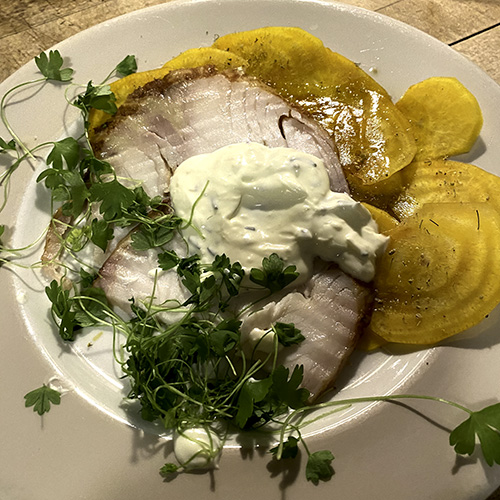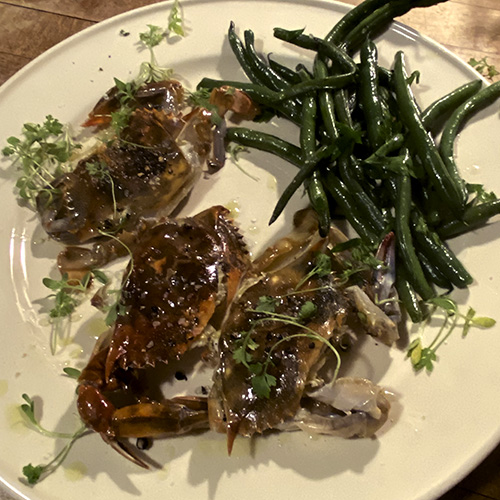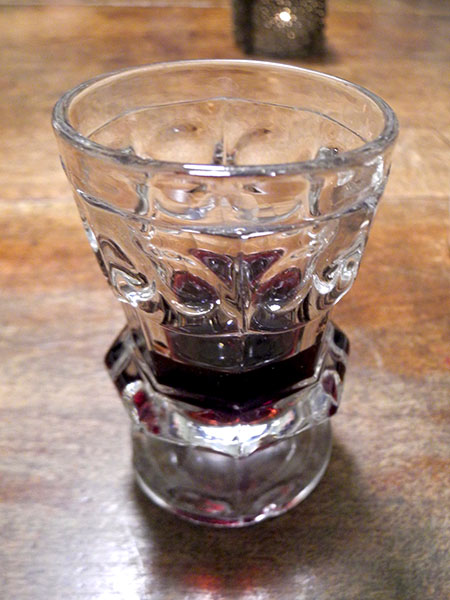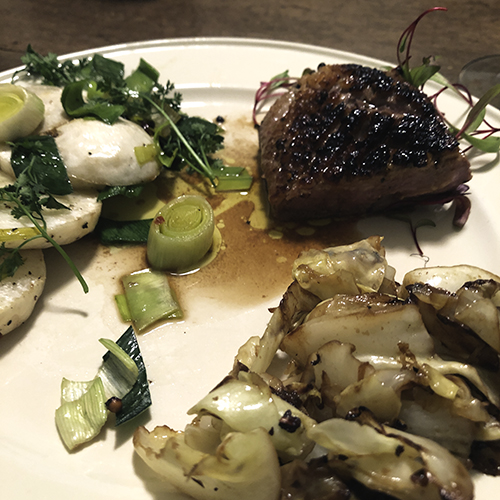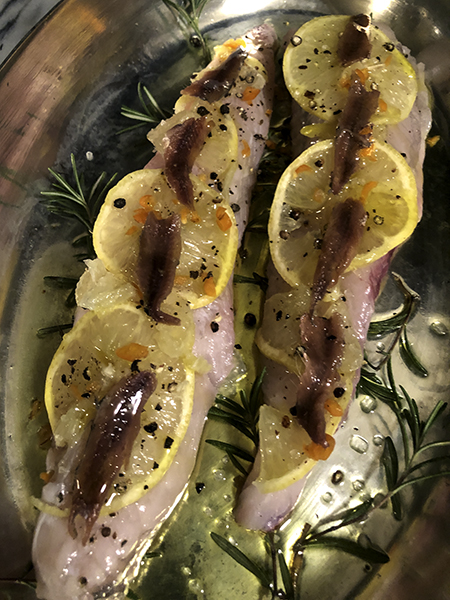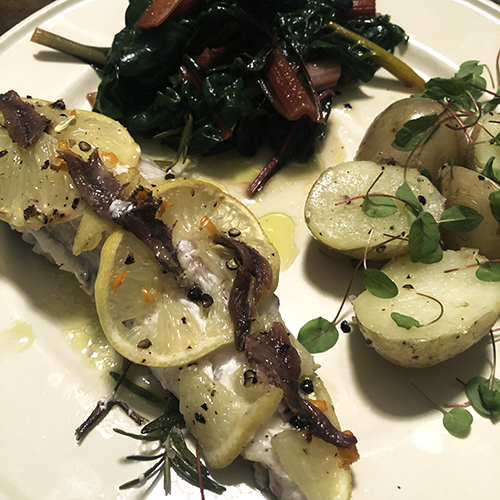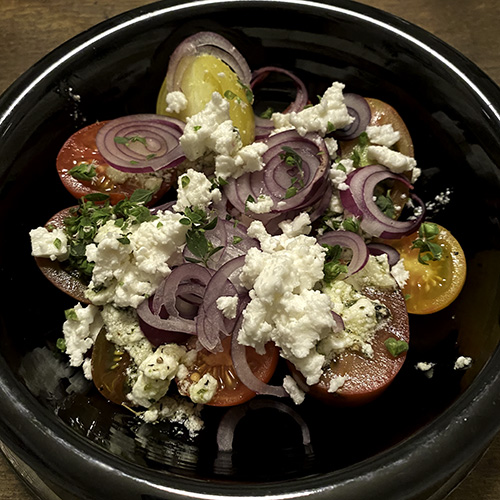
August 7, 2021
Because I had brought some terrific Bulgarian-stye feta cheese home from the Union Square Greenmarket, and because the mix of small heirloom tomatoes I’d picked up a number of days earlier was now perfectly ripe.
- A basket of small heirloom tomatoes, about a pound, a mix of shapes, sizes, and colors, from Eckerton Hill Farm in the Union Square Greenmarket tossed with a little Cretan olive oil and red wine vinegar; a bit of a garlic clove, chopped; two forms of oregano, dried Sicilian, crumbled off the stem, and fresh, the latter from our home herb garden and chopped; a tiny, thinly sliced red onion, sea salt and freshly ground black pepper.
- the wine was a Portuguese (Biera) sparkling, Beira Extra Brut Rosé ‘3B’ Filipa Pato.
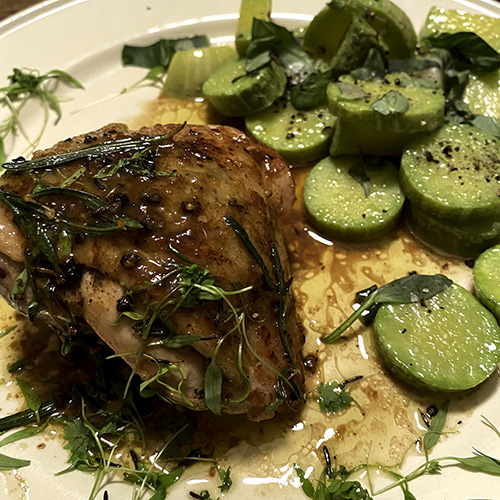
The main course was determined partly by the serendipitous spotting of what turned out to be the last specimen (I was told local restaurant chefs had scooped up all the rest) of a delicious Italian summer squash I rarely encounter, even among the creative farmers in Union Square: I didn’t have much choice in the larder when it came to meat or seafood, but I decided the frozen chicken thighs would make a great pairing with the very special zucchini.
- two 8-ounce chicken thighs (with bone and skin), from Ramble Creek Farm pastured birds, purchased in the Union Square Greenmarket, defrosted, rinsed, and brought to room temperature, a paste of 3 minced garlic cloves, fresh chopped rosemary from our garden, lemon zest, and a small amount of olive oil slid under the loosened skin, the chicken seasoned on all sides with sea salt and freshly ground black pepper, browned in butter, 2 lemon quarters added to the bottom of the pan, which was then covered loosely in foil (it needn’t/shouldn’t be a tight seal) cooked over medium-low heat, turning occasionally, until the internal temperature was 155-165 degrees, or until the juices ran clear when pricked with a fork, which turned out to be roughly 12 minutes this time, then whole rosemary leaves added to the juices at the end, the chicken arranged on two plates, the sauce stirred a moment and poured over the top, micro cressida from Rooted Family Farm added as a garnish
- one 18 inch long, one-pound Ligurian summer squash, ‘crookneck squash’, ‘zucchina trombetta’, or ‘trombetta di Albenga‘, from Campo Rosso Farm, cut into half inch slices or half-moons, heated inside a large antique copper pot in a tablespoon of olive oil in which 2 sliced garlic cloves been allowed to soften and become fragrant over medium heat, now adding just enough vegetable broth or water (I used water) to cover the bottom of the pan (about 1/4 inches deep), plus a quarter cup of torn basil from the garden, the pot covered and the trombetta cooked until fork tender but still maintaining some resistance (so, al dente?), about 5 minutes, removed from heat and served garnished with more basil and some chopped fresh epazote from Acevedo’s Farm
- the wine was a box wine, a French (Burgundy, Coteaux Bourguignons) red, Hérisson Vin Rouge (pinot noir, gamay) 3L box AOP Bourgogne Passetoutgrains 2019
- the music throughout the meal was a brilliant recording of Beethoven’s ‘Fidelio’, Marek Janowski conducting the Dresdner Philharmonie, the Sächsischer Staatsopernchor, and the Dresden MDR Rundfunkchor Leipzig, with Marek Janowski, Lise Davidsen, Christian Elsner, Georg Zeppenfeld, Günther Groissböck, Cornel Frey, Christina Landshamer, Johannes-Martin Kränzle, Aaron Pegram, Chao Deng



